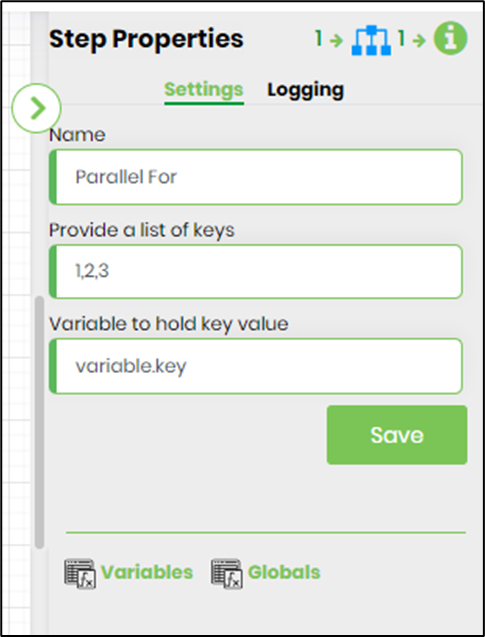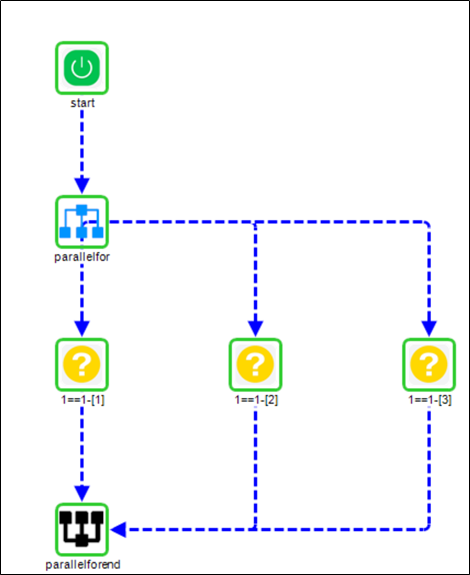Description:
The parallelFor step lets you iterate over a bunch of steps; the workflow will dynamically grow at runtime based on the keys provided within the step configuration. Steps must be placed between the parallelfor step and the parallelforend step as shown below in the diagram.
The parallelForEnd step lets you define the end marker step.
Usage:

Example:
Let’s build and execute the parallelFor-parallelForEndDef example.
- Create a new definition called “parallelFor-parallelForEndDef”
- Select the definition and click the “design” button
- Drag the above shown steps and connect them together
- Configure the "parallelFor" step as shown in the image below. The keys are comma separated (like 1,2,3 in this example) and the steps are iterated 3 times. The keys can also be initialized by a variable reference (may contain 7,3,10) and the steps are iterated 3 times. The keys are always comma separated by design. For e.g. key value 3 iterates only once and not 3 times.
 |
 |
- Once executed, the workflow will automatically grow to have the # of paths based on the # of keys as shown below.
